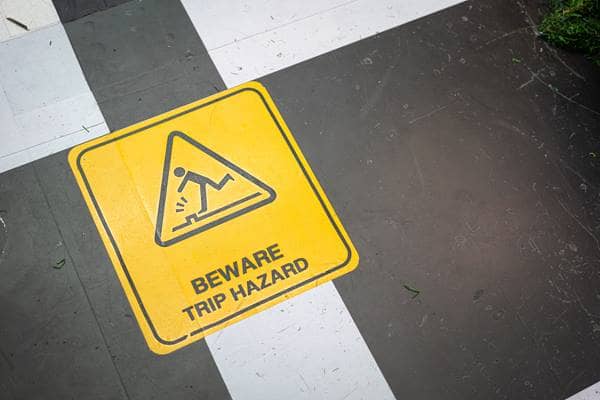
Safe grease trap design, training, and maintenance, as part of an overall workplace safety and health program, can prevent grease trap-related incidents.
Many businesses use grease traps (also known as grease interceptors) as part of a waste management system to prevent sewer system blockages from accumulated waste fats, oils, and greases. Workers can be injured if they trip or fall into a grease trap that is not properly covered. In some cases, grease traps may also be permit-required confined spaces and can present life-threatening hazards if entered into without safeguards in place. To prevent such hazards and potential injuries, employers must ensure that grease traps are properly covered, and that covers are adequately secured. Covers that are designed for residential use should not be used for commercial purposes.
How grease traps work
Grease traps capture and separate fats, oils, and greases from wastewater before the wastewater flows to the local sewer system. Businesses, such as restaurants, food processing facilities, hotels, grocery stores, and bakeries use grease traps. Many wastewater treatment agencies and public-owned treatment facilities require businesses to install grease traps.
Slip, trip, and fall hazards
Large capacity grease traps are often located in outside areas accessible to and frequented by workers. The grease trap is usually located in the ground, with a large manhole cover that must remain secure to prevent unauthorized access to the trap and prevent additional waste from entering the trap. Employees working near or around grease traps may be exposed to trip and fall hazards. If grease trap covers are not strong enough to support loads placed on them or are not properly secured. Workers can trip over an unsecured lid or fall into the large grease and wastewater pit. Workers who fall into a grease trap could suffer serious injuries or may even drown.
Other hazards associated with grease traps
- Confined space hazard - traps that are large enough for bodily entry, may be considered permit-required confined spaces and if so, must meet certain requirements. Grease traps must be tested and monitored before entry for oxygen content, flammability, toxicity, or explosive hazards.
- Flammable and toxic gases - can include methane (natural gas), hydrogen sulfide, carbon monoxide, carbon dioxide, and/or other gases depending on the greases, oils, and fats found in the grease traps.
- Engulfment - large grease traps are often deep enough to present an engulfment hazard. When traps are deep enough that a worker cannot exit without assistance, a ladder, steps, or another acceptable device should be located in the trap.
Source: osha.gov

